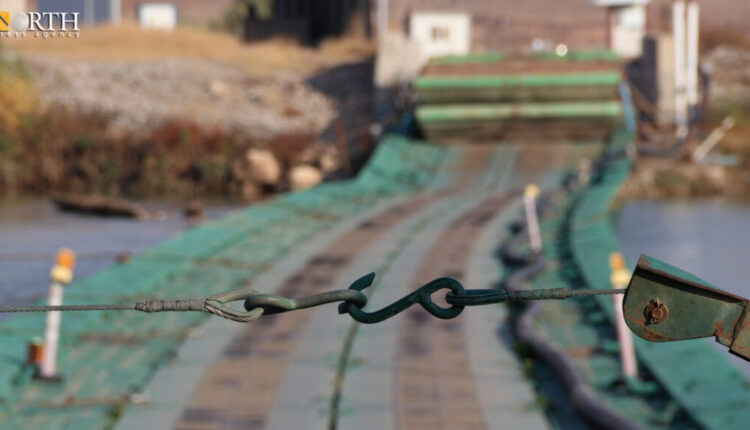
RAQQA, Syria (North Press) – Al-Khalaf was used to the rising food costs due to the constant decline in the value of the Syrian pound against the US dollar. Recently, however, as he prepared to do construction work on his house, which required cement, he was surprised to find that a bag of the stuff went for $15.
Issa al-Khalaf, 39, from the al-Hamrat area in eastern Raqqa, northern Syria, said the cement prices spiked from $105 to $250 for per ton as a result of the closure of the Semalka–Faysh Khabur border crossing.
The suffering of the people of Raqqa worsened amid the difficult economic conditions following the closure of the crossing, which is the main artery through which basic materials can enter the region, along with the deteriorating value of the Syrian pound against foreign currencies.
Al-Khalaf told North Press that the rise in cement prices led to a similar rise in related materials. The price of one brick rose from 1,400 SYP (equal to about $0.16) to 2,500 (equal to about $0.28), which prompted many to stop their constructions.
The closure of the crossing caused a double increase in the price of basic material. People in northeast Syria feel helpless since goods such as oil, sugar, electrical tools, and construction materials are irreplaceable.
On May 24, the Economy Board of the Autonomous Administration of North and East Syria (AANES), capped the price of one ton of cement at $95, warning merchants against establishing monopolies under penalty of fine and prohibition of engaging in business activities.
Hassan al-Tayeh, 45, a resident from the town of al-Karama, in Raqqa, who works in the sale livestock, is patiently waiting for the opening of the border crossing to start selling his cattle again and avoid incurring losses. He had bought his animals when prices were high, prior to the closure of the border crossing.
He depends on a steady stream of livestock to buy, fatten and export. The closure of the crossing exacerbates fears of a continuous closure. Al-Tayeh developed a plan and timetable for “fattening,” and a prolonged closure means spending more money on fodder.
He bought 12 sheep before the closure at 18 million SYP (equal to about $2,070), which are now valued at 10 million SYP (equal to $1,150).
The border crossing, closed on May 11, is the only outlet for the people of northeast Syria; its closure has impacted their lives and businesses.
The closure of the border crossing affected the livestock market. The price of one kilogram of lamb dropped from 64,000 SYP (about $7) to 48,000 SYP (about $5.50). It caused a shortage in the market and losses to traders and breeders, according to al-Tayeh.
It affected daily workers and low-income people like Hussein al-Ahmad, 33, from al-Karama. He cannot secure his family’s needs after prices of basic materials increased.
Al-Ahmad buys a 10kg bag of low-quality rice at 35,000 SYP ($4), whereas after the closure of the border, its price increased to 52,000 SYP ($6). His daily wage is only 20,000 SYP (about $2.29). He has to provide for his family of six with this wage, but jobs are not always available.
He notes that shop owners used to argue that the exchange rate caused high prices, but now they have two reasons. People with low income are helpless and cannot secure their families’ needs.
Al-Ahmad hopes the border crossing, a source of living for hundreds of thousands of people amid the harsh living and economic conditions, will reopen.
Ali al-Hanto, 47, from the town of al-Jadidat, in Raqqa, also hopes the border crossing will reopen and that relevant AANES authorities monitor the markets to prevent merchants from monopolizing goods and raising prices.
He believes that if the closure of border crossings and the declining value of the Syrian Pound come in tandem with a lack of monitoring of markets, the situation would be complicated and disastrous for people with low income, especially daily workers.
